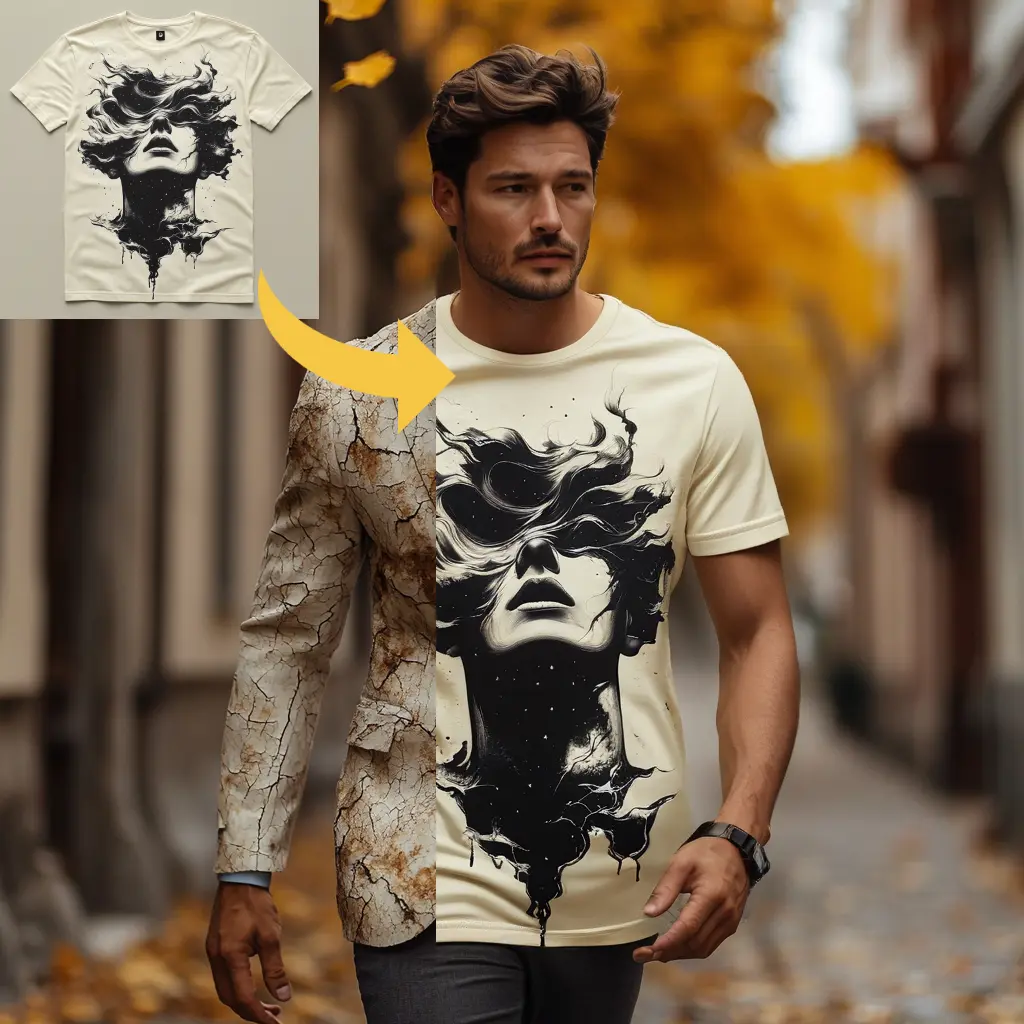ComfyUI Node: DD Advanced Fusion
DD-AdvancedFusion
Category🍺DD系列节点
Dontdrunk (Account age: 3252days) Extension
ComfyUI-DD-Nodes Latest Updated
2025-05-27 Github Stars
0.05K
How to Install ComfyUI-DD-Nodes
Install this extension via the ComfyUI Manager by searching for ComfyUI-DD-Nodes- 1. Click the Manager button in the main menu
- 2. Select Custom Nodes Manager button
- 3. Enter ComfyUI-DD-Nodes in the search bar
Visit ComfyUI Online for ready-to-use ComfyUI environment
- Free trial available
- 16GB VRAM to 80GB VRAM GPU machines
- 400+ preloaded models/nodes
- Freedom to upload custom models/nodes
- 200+ ready-to-run workflows
- 100% private workspace with up to 200GB storage
- Dedicated Support
DD Advanced Fusion Description
Versatile node for blending images with precision using various fusion types and adjustable parameters for creative control.
DD Advanced Fusion:
DD-AdvancedFusion is a versatile node designed to seamlessly blend two images using advanced fusion techniques. This node allows you to create visually appealing compositions by merging images with precision and control. It offers a variety of fusion types, including single-line and polygonal fusion, enabling you to achieve different artistic effects. The node is equipped with parameters that let you adjust the fusion angle, ratio, and edge blur, providing you with the flexibility to fine-tune the blending process to suit your creative vision. Whether you're looking to create smooth transitions or intricate patterns, DD-AdvancedFusion empowers you to explore a wide range of possibilities in image fusion, making it an essential tool for AI artists seeking to enhance their digital artwork.
DD Advanced Fusion Input Parameters:
输入A
This parameter represents the first image input for the fusion process. It is essential as it serves as one of the two primary images that will be blended together. The image should be in a compatible format, typically as a tensor or numpy array.
输入B
This parameter is the second image input for the fusion process. Like 输入A, it is crucial for the blending operation, providing the second image that will be merged with the first. Ensure the image is in a compatible format for processing.
融合类型
This parameter allows you to select the type of fusion to be applied. Options include "单线融合" (single-line fusion) and "多边形融合" (polygonal fusion). The choice of fusion type affects the visual outcome, with single-line fusion creating a straightforward blend and polygonal fusion offering more complex patterns.
融合角度
This integer parameter defines the angle at which the fusion occurs, ranging from 1 to 360 degrees, with a default value of 0. Adjusting the angle can significantly impact the direction and style of the fusion, allowing for creative control over the blending effect.
融合比例
This float parameter determines the ratio of blending between the two images, with a range from 0.0 to 1.0 and a default value of 0.5. A lower value favors 输入A, while a higher value favors 输入B, enabling you to control the dominance of each image in the final composition.
边缘模糊
This integer parameter controls the amount of blur applied to the edges of the fusion, with a range from 0 to 50 and a default value of 0. Edge blur can help create smoother transitions between the images, enhancing the overall aesthetic of the fusion.
多边形边数
This integer parameter specifies the number of sides for polygonal fusion, ranging from 3 to 12, with a default value of 6. It is only applicable when "多边形融合" is selected as the fusion type, allowing you to create intricate and varied fusion patterns.
尺寸适配
This parameter offers options for adapting the size of the images during fusion, including "自适应" (adaptive), "拉伸" (stretch), "裁剪" (crop), and "填充" (fill). The choice affects how the images are resized and aligned, ensuring they fit together seamlessly.
帧数适配
This parameter provides options for frame adaptation, including "较短" (shorter), "较长" (longer), and "平均" (average). It influences the temporal aspect of the fusion, particularly when working with sequences or animations.
DD Advanced Fusion Output Parameters:
融合结果
The output parameter, 融合结果, represents the final image produced by the fusion process. This image is the result of blending 输入A and 输入B according to the specified parameters, showcasing the combined visual elements of both inputs. The output is typically in the form of an image array, ready for further processing or display.
DD Advanced Fusion Usage Tips:
- Experiment with different 融合类型 settings to achieve unique artistic effects, such as using polygonal fusion for more complex patterns.
- Adjust the 融合比例 to control the dominance of each input image in the final result, allowing for subtle or dramatic blends.
- Utilize the 边缘模糊 parameter to create smoother transitions between images, enhancing the overall aesthetic of the fusion.
DD Advanced Fusion Common Errors and Solutions:
Error: "Input images must be of compatible dimensions"
- Explanation: This error occurs when the input images 输入A and 输入B have incompatible dimensions, preventing proper fusion.
- Solution: Ensure both images are resized or adapted using the 尺寸适配 parameter to match dimensions before processing.
Error: "Invalid fusion type selected"
- Explanation: This error arises when an unsupported fusion type is chosen, which is not recognized by the node.
- Solution: Verify that the 融合类型 parameter is set to either "单线融合" or "多边形融合" to ensure compatibility.
Error: "Fusion angle out of range"
- Explanation: This error indicates that the 融合角度 parameter is set outside the allowable range of 1 to 360 degrees.
- Solution: Adjust the 融合角度 to fall within the specified range to avoid this error.
DD Advanced Fusion Related Nodes
RunComfy is the premier ComfyUI platform, offering ComfyUI online environment and services, along with ComfyUI workflows featuring stunning visuals. RunComfy also provides AI Playground, enabling artists to harness the latest AI tools to create incredible art.



